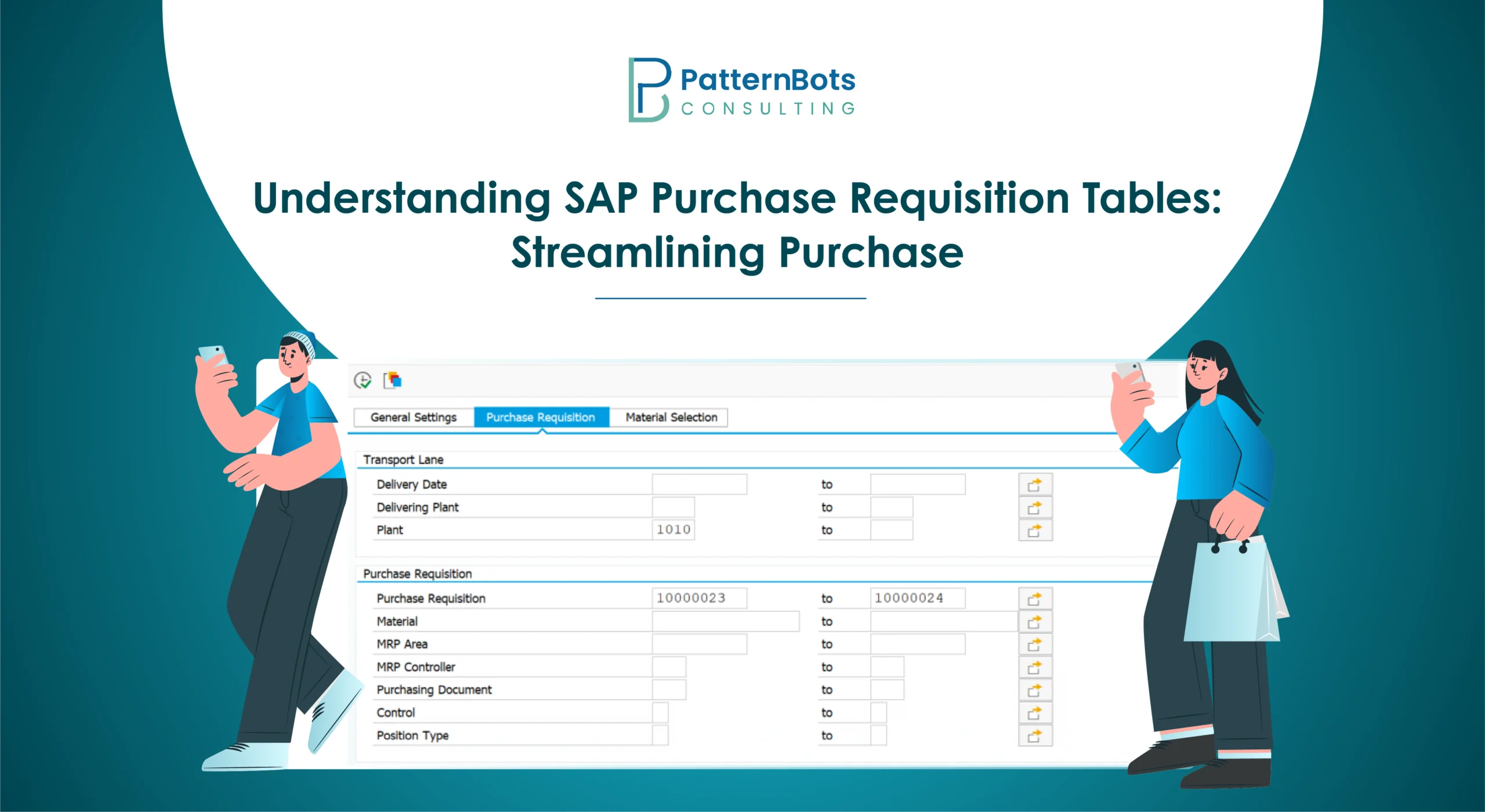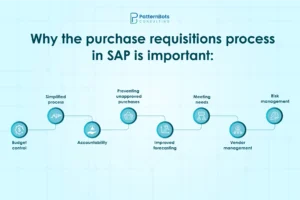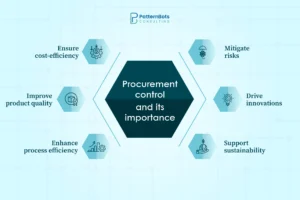
- Posted on
- Abhay Dave
Effective purchasing management enables companies to maintain operations, expedite approvals, and stay within budget. From the initial request to the final approval, SAP Purchase Requisition Tables streamline this procedure.
These tables facilitate real-time purchase tracking, spending control, and departmental collaboration. They link the buying process, from deciding what to buy to placing the order using direct tools.
This post will describe SAP Purchase Requisition Tables, their operation, and how to create purchase requisitions in SAP. We’ll examine how these tables support duties like stock transfers between sites and delivery scheduling. Also, you’ll see how our expert SAP consultants can help you at every SAP or cloud journey stage.
What is a purchase requisition in SAP?
A Purchase Requisition (PR) is a formal request to start buying goods or services. It can be manual, created by employees, or automatically created by the system. Purchase Requisition is the first step in procurement, acting as the official document for purchasing activities.
Create purchase requisition in SAP in different types of procurement, such as:
- Subcontracting: Sending raw materials to a vendor who returns them as finished products.
- Standard: Buying finished products directly from an external vendor.
- Consignment: Getting materials stored at the company’s site, with payment made to the vendor when the materials are used.
- External Service: Hiring third-party vendors for services like system maintenance or consulting.
- Stock Transfer: Moving materials within the company from one storage location to another.
Why is the SAP purchase requisition table important for your company?
In any organisation, there is always a need for supplies, materials, and equipment. This includes office supplies, consumables, machines, and other tools. For a modern business, keeping track of the items above is important for managing finance, planning, and transparency. A purchase requisition process in SAP solves all these pointers effectively.
Why the purchase requisitions process in SAP is important:

Budget Control:
Purchase requisitions help keep spending within limits. They ensure that expenses are checked and managed by getting approvals before making purchases.
Simplified Process:
Planning ahead can lead to discounts and larger orders. It also reduces unexpected purchases by allowing the purchasing team to follow a clear process.
Accountability:
Each request, approval, and rejection is recorded in SAP’s Purchase Requisition system. This creates transparency for audits and reviews.
Preventing Unapproved Purchases:
The approval process helps reduce unnecessary spending by ensuring that only approved and needed items are purchased.
Improved Forecasting:
By looking at purchase requisitions, finance teams can plan budgets and identify spending trends for the future.
Meeting Needs:
Purchase requisitions focus on necessary purchases, improve communication, and ensure departments receive what they need quickly.
Vendor Management:
Structured purchase requisition process helps manage vendor relationships, negotiate better prices, and coordinate delivery schedules for a more efficient supply chain.
Risk Management:
Standard purchase requisition process in SAP helps ensure compliance with company policies and regulations, reducing risks of non-compliance.
Important SAP tables for financial, logistics, and purchasing management
For improved data management and process improvement in areas like Material Management, Logistics, and Financial Accounting, it is crucial to understand key SAP tables. A comprehensive set of SAP purchase requisition tables and other information you may require is provided below.
1. For Purchasing
These tables are essential for managing purchasing tasks, from creating requisitions to tracking document histories.
| Table Name | Description |
| EBAN | Process of requesting a purchase |
| EBKN | Assigning budget accounts for purchases |
| EKKO | Header details for purchase documents |
| EKPO | Item details in purchase documents |
| EKBE | History of each purchase document |
| EKET | Schedule lines for agreements |
| RM06B | Input/output table for purchase requisitions |
| T161S | Indicator for purchase requisition approvals |
| T161F | Assigning approval points for requisitions |
| T161G | Requirements for approving purchase requisitions |
| T161H | Fields needed for the approval process in requisitions |
| EKKN | Budget assignment in purchasing documents |
| EKPR | Transferring material management purchase requisitions |
2. For Logistics
| Table Name | Description |
| MSEG | Material information |
| MARC | Data about the material from the plant |
| LIPS | Delivery of item data from the sales and distribution document |
| LIKP | Delivery of header data from the sales and distribution document |
| SER09 | Document header for serial numbers in purchase requisition items |
3. For Financial Accounting & Cost Control
| Table Name | Description |
| LFA1 | Vendor master (general section) |
| TEE001 | Purchase requisition from easy execution |
| EKPR | Transfer of MM purchase requisition in SAP |
These SAP purchase requisition tables assist businesses in optimising their purchasing, logistics, and financial operations within SAP. By understanding how each table connects to your processes, you can enhance data accuracy and accelerate decision-making.
How does a purchase requisition table work?
A purchase requisition in SAP, whether it’s created or not, always includes items categorised by procurement types: Standard, Subcontracting, Consignment, Stock transfer, and External service. Each item details the quantity and delivery date. For each delivery of subcontracted items, materials for assembly can be chosen.
External service items include hierarchical service specifications detailing ordered quantity and performance dates for individual jobs. Uncertain specifications may have value limits. For requisitions with existing contracts, items can indicate related value limits, and costs can be allocated to controlling objects via account assignments. A requisition can be fulfilled through purchase orders or long-term agreements.
Procurement control and its importance

Procurement control analyses purchases using requisition tables during the SAP purchase requisition process. Businesses gain from this strategy since it maximises budgetary spending, speeds up approvals, and preserves visibility through tracking. Businesses can handle purchases from the initial requests more effectively and economically by utilising stored order data. This guarantees that goods and services are purchased at the most competitive rates, fulfil quality requirements, and arrive on schedule. Businesses can cut costs, lower supply chain risks, and enhance supplier relationship management by closely observing the procurement process.
How does PatternBots help a business with all its SAP needs?
SAP cloud analytics and PatternBots are powerful platforms for data-driven decision-making. PatternBots streamlines SAP operations with tailored solutions, enhancing processes from project management to maintenance. These platforms enable businesses to manage and analyse data effectively, allowing for faster, more informed decisions. With PatternBots’ expert guidance and advanced analytics, businesses can optimise their SAP systems and make growth-oriented decisions.
Frequently Asked Questions
Follow these steps to create a purchase requisition in SAP successfully.
Step 1: Enter Transaction Code – ME51N
Enter transaction code ME51N in the SD Master Data Screen.
Or you can also navigate to Logistics -> Materials Management -> Purchasing -> Purchase Requisition -> Create.
Step 2: Fill in Purchase Details and Save
Fill in the following required fields.
Purchase Requisition document type as NB Standard. Source determination can be ON or OFF. Header note. Material, quantity, plant, fixed vendor, and purchasing organisation.
Then click on Save, and the Purchase Requisition will be created.
The key SAP tables associated with purchase requisitions include EBAN, EBKN, and EKPO.
- EBAN is used to create the process of requesting a purchase.
- EBKN is important for assigning budget accounts for purchases.
- EKPO is used to create Item details in purchase documents.
There are a lot of important SAP purchase requisitions tables used, but these are the few most important ones.
The main difference between a purchase requisition and a purchase order is simple. A purchase requisition is for getting internal permission to buy goods or services. On the other hand, a purchase order is for actually purchasing the goods or services. These are internal documents created and managed within the company.
Using document types helps you specify and organise your purchase requisitions more accurately, making the process smoother and more efficient.
The following document types are available for purchase requisitions:
- Standard Purchase Order: A request to procure goods or services from an external vendor.
- Subcontracting: An order where a vendor receives materials to produce goods as specified.
- Stock Transfer: The internal movement of materials between different company locations or plants.
Here’s the step-by-step process for converting a purchase order from the respective PR.
Step 1:
Type the transaction code ME21N in the Master Data Screen, and you’ll be ready to open the Create Purchase Order screen.
Step 2:
- To start, simply select “Purchase Requisitions” from the dropdown menu.
- Then, type in the PR number of the Purchase Order you wish to create and click “Execute.”
- Next, drag the standard reference Purchase Requisition (1) into the cart beside NB Standard PO (2).
- You’ll see the purchase details in the table. Take a moment to verify everything is correct, and when you’re ready, just click “Save.”